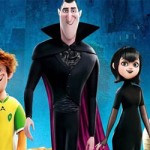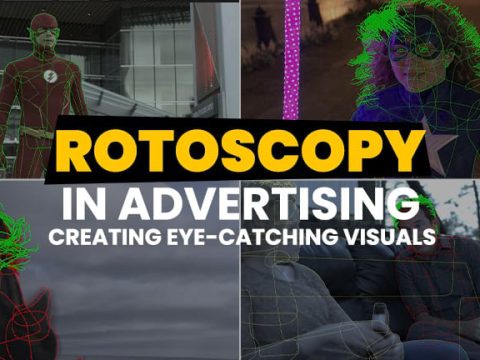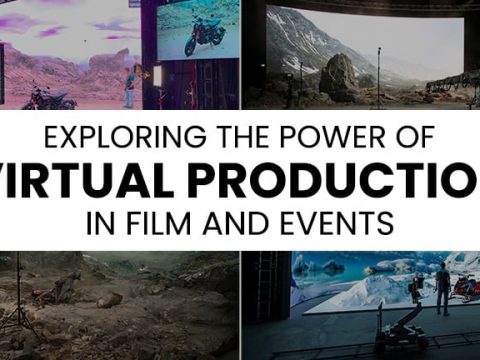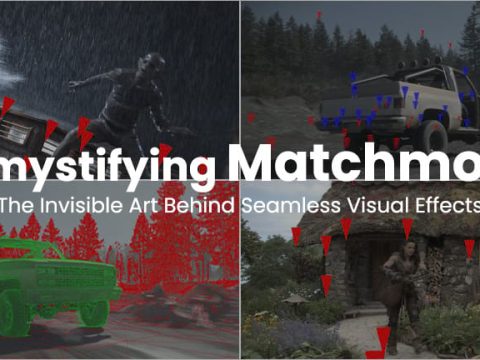What would we do without movies? They add just the right amount of entertainment to our lives! Although movies on an average do not exceed two to three hours, a lot goes into the making of these movies. Whether it is the perfect locations or the amazing cinematography, both Hollywood and Bollywood continue to roll our marvels after marvels every year. Now with the evolution of technology, producers and directors are making full use of it. It is very common to use VFX, from just small scene to almost most of the movie. However, there are a few master pieces that have used VFX to truly create magic!
Although there are many movies which made a mark in the VFX category, here are five such movies which truly rewrote the VFX history.
Matrix (1999)
The action thriller officially marked the dawn of VFX in movies. The Matrix was revolutionary in a way with spectacular action sets and one of the most jaw-dropping effect that were seen during that time. Giving birth to an all new technique, Matrix is known for introducing the ‘Bullet Time’ which allows a shot to progress in slow-motion while the camera appear to move through the scene at normal speed. Throughout the film, this technique was used to illustrate characters exertion of control over time and space which was very important for the plot to build.
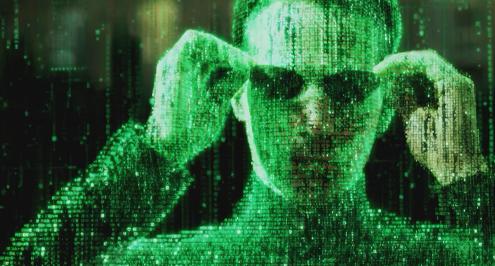 Although these are known facts of the movie, a fun fact that is not very popular is the level of perfection Andy Wachowskis wanted from the movie. Due to the complexity and uniqueness of the script and the different type of techniques being used, the actors were given special training for acting methods that were to be used for the film. Reeves also stated that he was made to read various books on psychology and Simulacra and Simulation, so that he could set the mood just right. Talk about ‘going into the character’!
Although these are known facts of the movie, a fun fact that is not very popular is the level of perfection Andy Wachowskis wanted from the movie. Due to the complexity and uniqueness of the script and the different type of techniques being used, the actors were given special training for acting methods that were to be used for the film. Reeves also stated that he was made to read various books on psychology and Simulacra and Simulation, so that he could set the mood just right. Talk about ‘going into the character’!
Avatar (2009)
Avatar is probably the biggest milestone in not only the VFX category, but for the entire film fraternity all over the world. The development of the film began in 1994. The film was supposed to take place after the completion of Titanic, but being the perfectionist that he is, Cameron stalled the film as he believed that the necessary technology was not yet available to achieve the vision of the film.
First movie to ever cross the US$ 2,000,000,000 mark worldwide (and later the US$ 2.5 billion mark), making it the highest grossing film in history. One of the most expensive movies ever made (as of December 2009), with an estimated budget of US $280,000,000.
In 2000, when the production of the movie started, it was a breakthrough for technology and innovation. Just to keep track of the massive amount of data for the movie, an entirely new cloud computing and Digital Asset system name Gaia was created! Just to render one Avatar, Weta used a 10,000 sq. ft. server farm making use of 4,000 HP servers with 35,000 processor cores with 104 terabytes of RAM and three petabytes of network area storage running Ubuntu, Linux, Grid Engine cluster manager and two of the animation software and managers. The render farm occupies the 193rd to 197th spots in the Top 500 list of the world’s most powerful supercomputers.![]()
Too many numbers to process? Well, maybe you need a trek through the forests and jungles just like when Cameron took the entire cast and crew to Hawaii, in order to get a better sense of what it would be like to live and move around in the jungle on Pandora, since there would not be any actual jungle sets to aid and guide the actors and crew.
Life of Pi (2012)
When M. Night Shyamalan, who was originally approached to adapt the novel ‘Life of Pi’ into a movie, was asked to comment on Ang Lee’s work, this is what he had to say – “Though Lee did a wonderful job, I think my film would have been different from his version. Different perspectives, I guess. When I was approached to do the film, I wanted more time. The production house wanted me to do it right away, but I’m sure they had their reasons. It took them six years to find another director.”
Well, someone sounds jealous! And rightfully so. A small part of every viewer of that movie was jealous of some part of that movie. It could be when Pi got a once in a life time experience with the Great Bengal Tiger Richard Parker, or when he saw the beautiful and breath-taking sights along the way, at least at one point of the movie, you wanted to be either Pi or Richard Parker.
Let me make it easier for you! You can now have the same adventures as our very own Pi. Simply grab a stuff toy and sail a boat in the middle of a… swimming pool!
Yes, it is true! The entire movie was shot in a swimming pool with a stuff toy playing the role of Richard Parker. If you do want to get jealous though, envy the VFX team. It takes true skill and talent to achieve the level of brilliance that they did for this spectacular movie.
Probably one of the highest grossing movies to be shot in India, Life of Pi received highly positive reviews, with praise directed towards the visual effects “A 3D adaptation of a supposedly ‘UN-filmable’ book, Ang Lee’s Life of Pi achieves the near impossible — it’s an astonishing technical achievement that’s also emotionally rewarding.” – The Daily.
Interstellar (2014)
Depending on which critic you talk to, Christopher Nolan is either a throwback, a fusspot and an ideologue, or the spiritual offspring of Steven Spielberg and Stanley Kubrick. (Of course, there’s no reason he can’t be all of the above.)
There’s no doubt that Interstellar is a great success story on its own. Christopher Nolan and his team did do an amazing job and definitely made this movie a great milestone, not only for VFX but also for the entire film industry. However, there is one more story of success linked to this movie that is nothing short of being a successful film plot in its own.
The VFX for Interstellar was created by the Prime Focus Group, owned by Namit Malhotra, a true rags to riches example. Namit started his company in his Dad’s garage in Mumbai, five later he moves to LA now a successful man and owner of one of the leading VFX companies.
For interstellar, they tried to use a different approach. They created the effects first, so that digital projectors could be used to display them behind the actors, rather having the actors perform in front of green screens. Ultimately the film contained 850 visual effect shots at a resolution of 5600 x 4000 lines: 150 shots that were created in camera using digital projectors, and another 700 were created in post-production. Of those, 620 were presented in IMAX, while the rest were anamorphic.
Interstellar may be drifting a million miles out in the void, but it knows exactly where it’s going. – The telegraph.
Bahubali (2015)
At the same time as Hollywood films were experimenting and executing VFX, India had also closely followed and caught on. Dada Saheb Phalke’s silent movie Kaliamardhan in the year 1919 is one such example with amazing work. In 2015 another milestone was achieved in the field on VFX – Bahubali.
Bahubali has the highest number of National Award winning technicians working on the project – around 800+ technicians worked on Art, Design and Visual Effects for this magnum opus. Along with the box office records, another record that Bahubali broke is the budget. With a massive budget of 250 crore, it bags the first rank as the heist budget movie ever in the history of Indian Cinema. 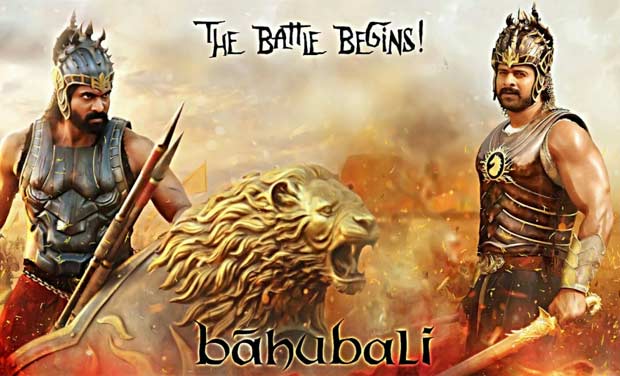
Never ever before seen CG graphics with over 600 people working on the camera graphics, it took almost 1 year for Pre-Production work which is highest for any Indian movie till date. The magnificent palaces, impregnable forts, breath-taking water falls were all created for the movie. Usually a 24-foot-high scale set is created, but for this movie the makers decided to go for 45-foot-high scaled sets which was really amazing.
More than 90 percent of the film had visually enhanced shots and according to the producer, more than 600 VFX artists worked for the film from 18 facilities around the world led by Makuta VFX and Firefly in Hyderabad, Prasad Studios in Hyderabad and Chennai, Annapurna Studios in Hyderabad, Tau Films in Malaysia, and Dancing Digital Animation and Macrograph in South Korea. Makuta VFX which had prior experience of working with S.S.Rajamouli was chosen as principal visual effects studio.
The scene which sees Shiva singlehandedly erecting a giant gold statue of Bhallala Deva is jawdroppingly iconic. Take a bow S.S. Rajamouli. – The Times of India.
When it comes to the movie with the most visual effects (VFX) in the world, one notable film stands out:
“Avengers: Endgame”
Released in 2019, “Avengers: Endgame” is widely regarded as a cinematic milestone in terms of visual effects. The film features an unprecedented number of VFX shots and showcases an extensive range of digital effects work.
The visual effects team, led by companies like Industrial Light & Magic (ILM), Weta Digital, Framestore, Digital Domain, and others, created a vast array of complex and highly detailed visual effects sequences. These sequences include large-scale battles, time travel sequences, character transformations, and intricate digital environments.
With over 2,500 VFX shots, “Avengers: Endgame” pushed the boundaries of what was previously seen in visual effects-driven films. The sheer scale and complexity of the film’s VFX work earned it the reputation of being one of the most VFX-intensive movies ever made.
The film’s exceptional VFX work played a crucial role in bringing the epic superhero story to life, seamlessly blending real actors with digital characters and environments. The meticulous craftsmanship and attention to detail in the VFX contributed to the film’s success, both critically and commercially.
It is important to note that the world of visual effects is constantly evolving, and new films may surpass the record set by “Avengers: Endgame” in terms of sheer quantity or innovative use of VFX. However, as of the knowledge available up to September 2021, “Avengers: Endgame” holds the distinction of being one of the movies with the most extensive and impactful visual effects.
The film industry is changing. Visual effects have become quite a large cog in the movie making machine, and should be recognized as such. The creation of computer-generated imagery and physical effects is painstakingly hard work that requires a significant amount of time and skill to pull off. Whether or not audiences value visual effects over story, one thing is for certain: they do value visual effects.





